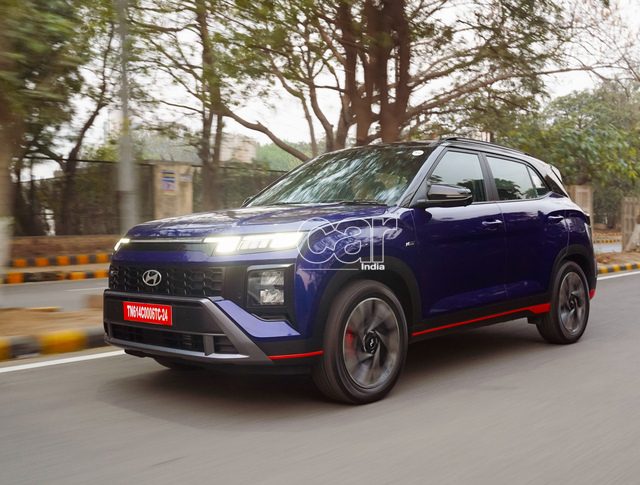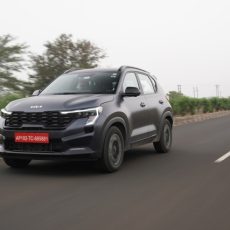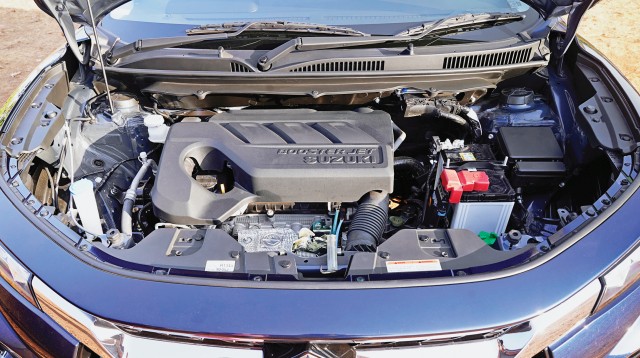
Maruti Suzuki Fronx – Engine and Transmission
The engine under the bonnet in the Maruti Suzuki Fronx is a big deal too. The Boosterjet is back. Last seen in the Baleno RS with 102 hp and 150 Nm—the latter from 1,700 rpm, back when we drove it in March 2017—there has been only a small change in output. The 998-cc, turbo-petrol, mild-hybrid unit produces 100 hp and 148 Nm of torque in its latest guise. Direct fuel-injection remains as does the three-figure horsepower. However, while peak power arrives at the same 5,500 rpm as before, the torque peaks higher, with the plateau now starting at 2,000 rpm and staying until 4,500 rpm. And, thankfully, we had both the five-speed manual and the six-speed automatic.

Maruti Suzuki Fronx – Ride and Handling
On Goa’s narrow roads with evenly distributed sharp speed humps, the Maruti Suzuki Fronx behaved admirably. The first thing to point out is the steering feel. It feels connected and returns a decent level of feedback, like the Grand Vitara and unlike the old Baleno and the new Ertiga and Brezza. The suspension set-up is on the stiffer side and that contributes to making it fun to drive. The new wheels and tyres also add their mite to the feel with the slightly higher 60-profile rubber, again compared to the Baleno Alpha, and, of course, soak up rough bits easier. Its highway manners are good, too.
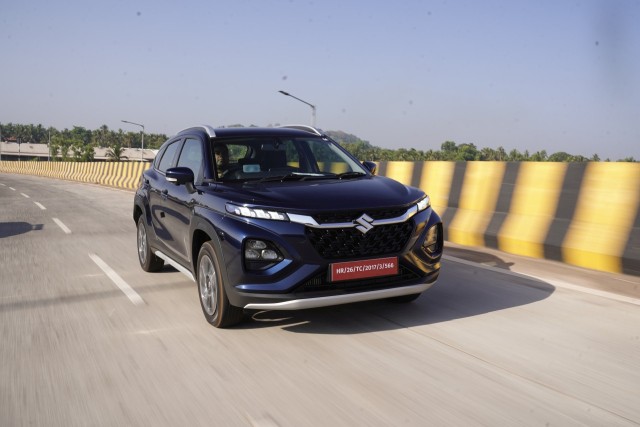
The manual is more fun to drive as well, because, while the specs are identical to the Baleno’s, the wheels are not. The diameter has gone up, thus changing the overall ratio. The manual harnesses the torque band better and I could keep the revs closer to the 2,000-rpm mark where getting on the gas leads to a spurt in acceleration; much needed when the window of opportunity to perform a successful overtake on narrow roads is minuscule. The automatic, on the other hand, is the new six-speed ’box used with the “K15” 1.5-litre engine on everything from the Ciaz and XL6 to the Brezza and Grand Vitara. With the torque of the 1.0 Boosterjet higher than even the 1.5, this ’box makes sense, but the spread of torque is what justifies this pairing. However, it isn’t the quickest responding combination. The engine is kept in the lower reaches of the rev-range and this means it does feel sluggish when one needs to get a move on. Turbo-lag is evident as the boost pressure builds up, but once it builds up steam, it feels rather exciting to drive. That rush, plus the new feelsome steering, makes it an enjoyable car, more so if driven casually.
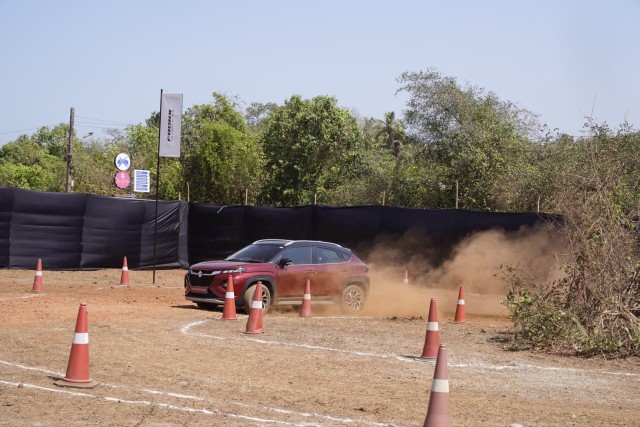
The additional equipment was put to the test in a series of challenges from an acceleration run and gravel braking to a slalom, autocross-style run, and even a 360° view camera demo where the Fronx was blacked out to zero visibility—take that, RTO—and needed to be driven in reverse around a course without knocking down any cones. An interesting exercise, yes, but not fun for anyone high on anxiety. Nevertheless, the Maruti Suzuki Fronx proved itself to be quite capable, even without 4×4 drive. It has decent approach, breakover, and departure angles and, though the traction control had a devil-may-care attitude to a heavy foot on the dirt, it worked well on tarmac. After all, it’s a front-wheel-drive car on a lift kit of sorts, so it’s more urban-oriented than much else. The horrors of a sudden pothole or ungainly speed hump, however, are less intimidating in the Fronx.

Maruti Suzuki Fronx – Rivals
This car enters a space once populated by the Volkswagen CrossPolo, Hyundai i20 Active, Toyota Etios Cross, and FIAT Avventura; all of which are now relegated to history save a few surviving examples still on the road. That said, the obvious targets—size and engine-wise—are the Hyundai Venue and Kia Sonet, with the Citroën C3, Renault Kiger, and Nissan Magnite also meriting mention. They all have turbo-threes with three-figure horsepower as well as nat-asp engine options.
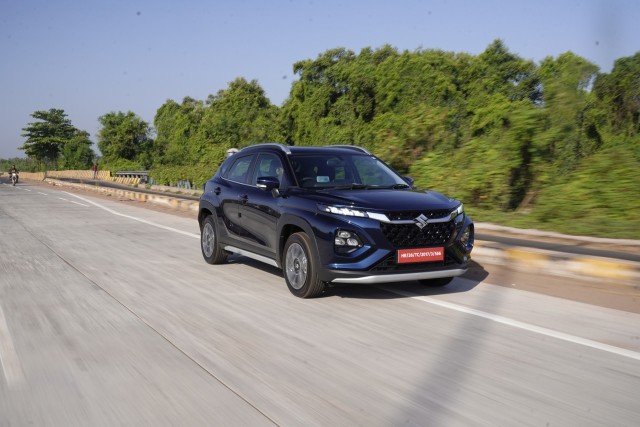
For the Fronx, the efficiency, too, is not too bad. Maruti Suzuki claim 21.5 km/l and 20 km/l for the manual and automatic Turbo versions respectively. The available 1.2-litre, four-pot, mild-hybrid petrols are pegged at 21.8 km/l and 22.9 km/l for the MT and AMT versions, sorezore.
All in all, there is a new challenger in the “compact SUV” space and it’s ready to stand tall, Fronx and centre.

Also read: Maruti Suzuki Grand Vitara Full Review | Maruti Suzuki Brezza First Drive Review
Need to Know – Maruti Suzuki Fronx Turbo Alpha/Alpha AT
Price: Rs 11 lakh/Rs 12.5 lakh (estimated)
Engine: 998 cc, in-line three, turbo-petrol, direct injection, 12-volt mild-hybrid
Max Power: 100 hp @ 5,500 rpm
Max Torque: 147.6 Nm @ 2,000-4,500 rpm
Transmission: Five-speed manual/six-speed automatic, front-wheel drive
Suspension: MacPherson strut front, torsion beam rear
Weight: 1,030 kg/1,060 kg
Maruti Suzuki Fronx 1.2 Delta+/AMT
Price: Rs 8.25 lakh/Rs 8.70 lakh (estimated)
Engine: 1,197 cc, in-line four, petrol, 12-volt mild-hybrid
Max Power: 90 hp @ 6,000 rpm
Max Torque: 113 Nm @ 4,400 rpm
Transmission: Five-speed manual/automated, front-wheel drive
Suspension: MacPherson strut front, torsion beam rear
Weight: 970 kg/975 kg


